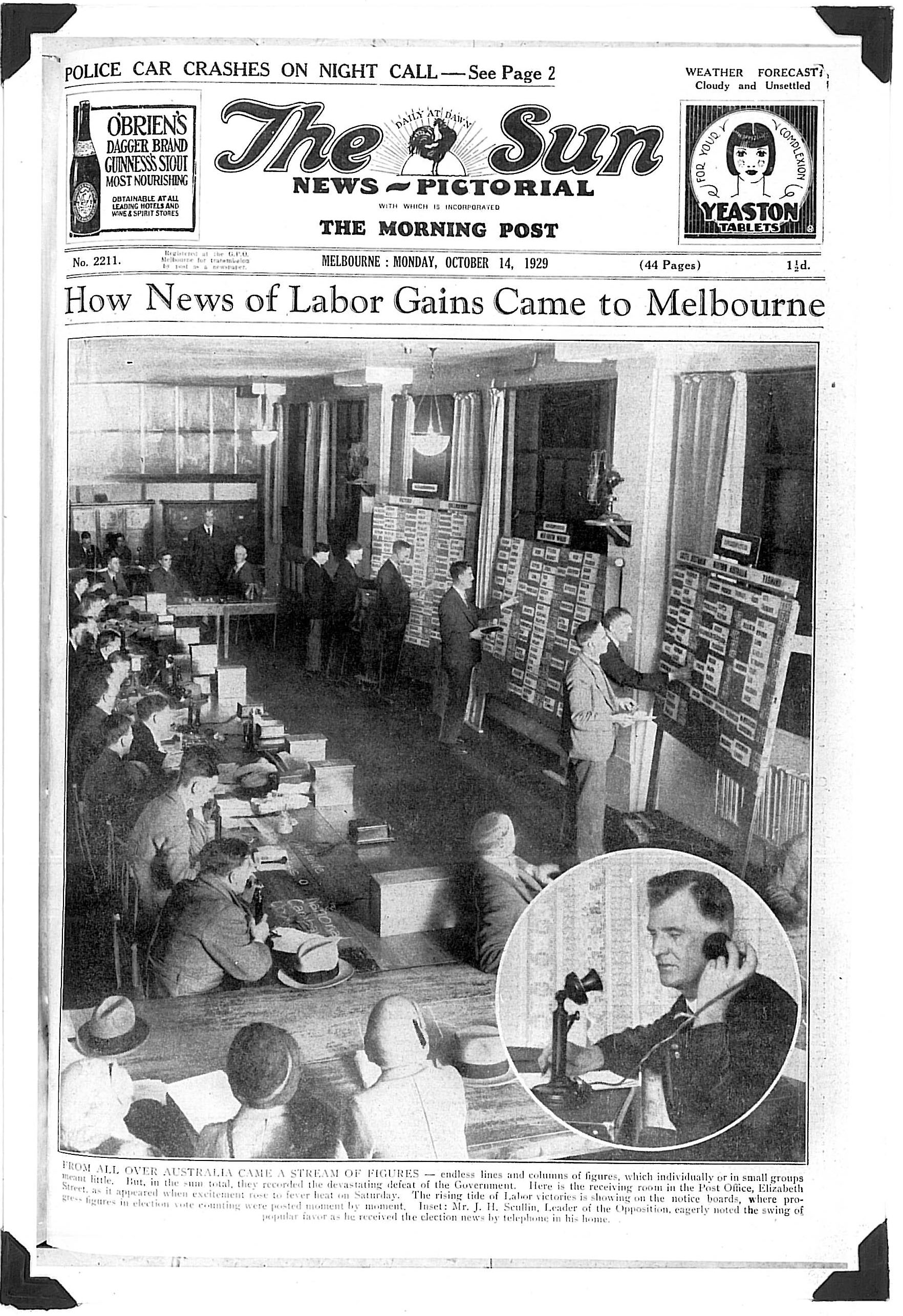James Scullin had served his political apprenticeship as an organiser for the AWU and an opponent of conscription before he returned to Parliament in 1922 as the MP for the Victorian electorate of Yarra (he had previously served one term in 1910-13). In many ways he was the man for the times in the Labor Party. He was a Catholic, firmly based in the union movement, and was able to bridge the left and right wings of the party. He had a passionate interest in economic and industrial policy, which were at the centre of the Bruce-Page reactionary agenda. A series of speeches in 1927, after he became deputy leader of the party, accurately warned of the dangers of excessive debt and the likelihood of an economic collapse.
At the 1928 Federal elections, profiting from disagreements in the Nationalist coalition with the Country Party, Scullin made strong inroads, increasing Labor representation in the House from 23 to 31. With the coalition in disarray, and Prime Minister Bruce alienating even many middle-of-the-road voters by attempting to completely dismantle the industrial arbitration system which had served Australia well up to that time, and confronting State governments by moving to deprive them of power in industrial relations, the new administration was living on borrowed time.
When the coalition completely collapsed in mid-1929 Labor won the forced early election of October 1929. The main issue was the division between the Nationalists and Country Party and the signs of economic instability that were already affecting Australian jobs. The Labor Party swept back into office with the largest majority it had ever controlled, winning 46 of the 75 seats. This caused euphoria among Labor supporters throughout the nation, with special delight in the fact that the detested Prime Minister Stanley Bruce lost his own seat in the election. (This was the first time that had happened in national elections; the second time was the defeat of John Howard in the 2008 election.) Scullin was greeted as a conquering hero by his supporters, and the party was confident that it could resume the implementation of the party program and reverse the tide of conservative hegemony.
Scullin took office on 22 October 1929 with a clear majority in the House but without control of the Senate. Two days later, in far off New York, Black Thursday began the Wall Street Crash that precipitated a world-wide Depression.
